The Oceanic Rhythm: Exploring Caribbean Waves
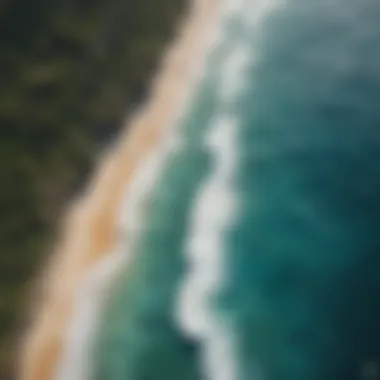
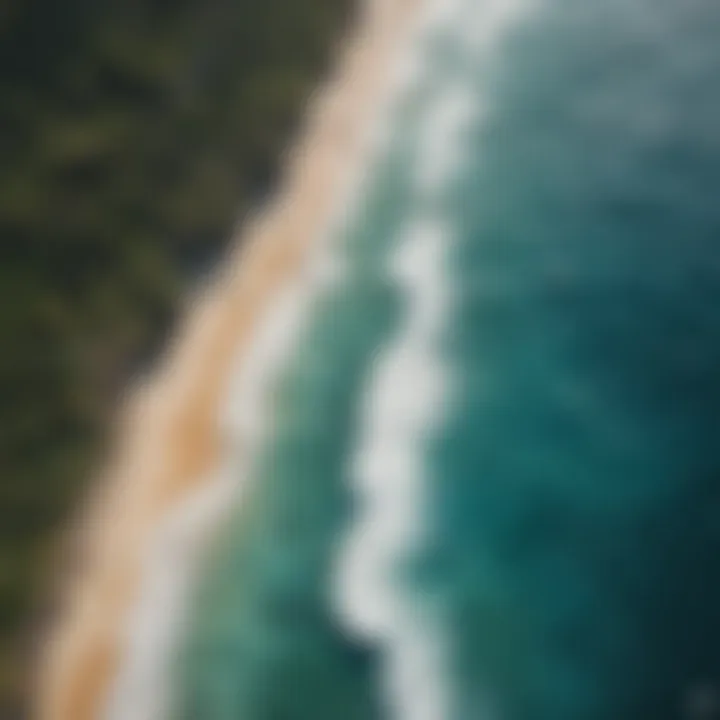
Intro
The Caribbean is not just a picturesque paradise of sun, sand, and turquoise waters; it is a realm where the ocean speaks through its waves. Each wave carries a story, shaped by countless environmental factors, and for surfers, these waves are more than just water—they embody a unique culture and thrilling adventure. This article explores the nuances of the Caribbean wave, its intrinsic connection to surf culture, and the larger narrative of climate change's impact on this delicate ecosystem.
Surfers from across the globe flock to the Caribbean, eager to ride its swell. Places like Barbados, Puerto Rico, and the Bahamas boast surf spots that beckon the adventurous soul. But, there's more beneath the surface than just beautiful beaches and cheery locals. Understanding how to ride these waves, which surfboards to use, and what conditions are best are crucial for both novices and seasoned surfers alike.
In essence, this guide not only encapsulates the technical mastery of surfing but also highlights the responsibility surfers share in preserving the oceanic beauty that defines the Caribbean. The fusion of technical and cultural dimensions of surfing offers an enriching lens through which one can appreciate these magnificent waves.
Understanding Waves in the Caribbean Context
Waves undeniably weave a crucial tapestry in the Caribbean surf culture. They are not merely foamy entities rolling toward the shore; they serve as life sources for surfers, adventurers, and anyone who finds joy in the dance of the ocean. Understanding these waves, especially here in the Caribbean, can significantly enhance the overall surfing experience while also fostering respect for the natural environment.
What Defines a Wave?
A wave can be described as an oscillation that travels through a medium, transmitting energy from one point to another. In the oceanic context, waves form when energy, primarily from wind, disturbs the water surface. In the Caribbean, these waves take on unique characteristics due to the specific geographical features and climatic factors of the region.
To break it down, waves consist of three main parts: the crest, the trough, and the wavelength. The crest is the highest point of a wave, where surfboards find their swiftest ride. Conversely, the trough is the low point between waves. The wavelength, which measures the distance between successive crests, can influence wave behavior, including how it breaks. All these elements contribute to defining what a wave is and significantly shape the surfing experience.
The Mechanics of Wave Formation
When discussing wave formation, one must take into account both wind and swells. In the Caribbean, steady trade winds work hand in hand with warm waters to create waves that are both consistent and diverse. As wind blows across the water surface, it imparts energy to the water, leading to the formation of waves.
Factors such as wind speed, duration, and the distance over which the wind blows (fetch) greatly contribute to the wave size and quality. In more tumultuous conditions, a mix of longer, mighty swells can meet wind waves, producing complex surfing conditions that some surfers thrive on while others may want to steer clear.
Caribbean Wave Characteristics
Unlike the wild breaks often found in the Pacific, Caribbean waves offer a blend of challenges and rewards. The characteristics of these waves are often influenced by the surrounding geography, including the presence of coral reefs, shallow platforms, and beach setups, which sculpt how waves break.
The Caribbean is known for its gentle swells providing ideal conditions for beginners—swell heights of one to three feet are common. More experienced surfers may want to navigate towards the reefs, where waves can build strength and create thrilling, high-speed rides. Some key flavors of Caribbean waves include:
- Reef Breaks: More powerful and fast, usually offering thrilling rides at higher tides.
- Point Breaks: Waves that wrap around points, offering long rides.
- Beach Breaks: More random and variable, affected heavily by tides.
In essence, understanding the distinct traits of waves in the Caribbean can prepare surfers for both the expected and unexpected, enabling them to savor these oceanic rhythms fully.
"The ocean stirs the heart, inspires the imagination, and brings eternal joy to the soul." - Wyland
By grasping these fundamental concepts, surfers are better equipped to navigate the highs and lows of Caribbean waves—both figuratively and literally. They can enjoy the broader ocean experience while still treading lightly on this rich environment.
Variations in Wave Types Across the Caribbean
In the Caribbean, waves come in an array of shapes and sizes, shaped by geographical elements, wind patterns, and human interactions. Understanding these variations is crucial for surfers and enthusiasts who wish to leverage the unique experiences this region offers. Knowing the differences between wave types can significantly influence choice of surf spots, gear selection, and even surfing style. Let’s dive into the specifics.
Beach Breaks vs. Reef Breaks
Beach breaks occur where the waves break over sandy bottoms, while reef breaks happen over coral reefs. In the Caribbean, the two types present varying surfing conditions and challenges.
- Beach Breaks: These are generally more forgiving. For beginners, beach breaks like the north shore of Barbados offer soft, rolling waves that are easier to ride. They also shift as the tide changes, creating a playful environment, making them an excellent choice for those just starting out.
- Reef Breaks: On the flip side, reef breaks are known for their power and speed. They often produce steeper waves, allowing for more dynamic rides, but they come at a cost— the danger of rocky bottoms means that surfers must be more cautious. A prime example is the famous Surfing Point in Puerto Rico, where waves peel perfectly off the reef, creating a thrilling experience for more proficient surfers.
Determining the right break can support your surf ability and ensure safety.
The Role of Wind and Swell
Wind and swell dictate the character and quality of waves throughout the Caribbean. Different wind patterns create diverse surfing experiences depending on timing and location.
- Wind: In surfing terms, the wind can either be your best friend or worst enemy. Offshore winds tend to groom the waves, resulting in clean, well-formed faces. Onshore winds can cause choppy, less predictable conditions, affecting rideability. For a surfer, understanding the forecast can mean the difference between a fantastic session and a frustrating one.
- Swell: Swell is a significant factor in determining wave size. The Caribbean can be influenced by multiple sources of swell, from distant storms in the Atlantic Ocean to local sea breezes. These swells, combined with the region’s geography, lead to varying surf conditions throughout the year.
Consistent understanding of how these elements interplay helps surfers make better-informed decisions.
Seasonal Wave Patterns
The Caribbean’s wave patterns are not static; they change with the seasons, reflecting the meteorological phenomena occurring in and around the region.
- Winter: Often considered the prime time for surfing, winter brings larger swells driven by north Atlantic storms. Surfers flock to spots like the north shore of Puerto Rico during this time, where the waves can reach impressive heights.
- Summer: During the summer months, the Caribbean experiences smaller, more mellow swells. Local conditions can be quite favorable, particularly for beginner surfers. The warm waters invite more people to the beaches, making it a bustling time for surf schools and community activities.
Recognizing these seasonal changes can aid surfers in maximizing their experiences and selecting the optimal time to surf.
"In the Caribbean, time spent waiting for a good wave can teach you patience, while the ride can teach you joy."
Exploring wave types, understanding wind influences, and being aware of seasonal patterns can enhance the surf experience while also fostering a deeper appreciation for the natural dynamics that shape these beautiful waters. Each break offers distinct challenges and rewards, allowing surfers of all levels to find their niche and enjoy the vast oceanic playground that defines the Caribbean.
Prime Surfing Locations in the Caribbean
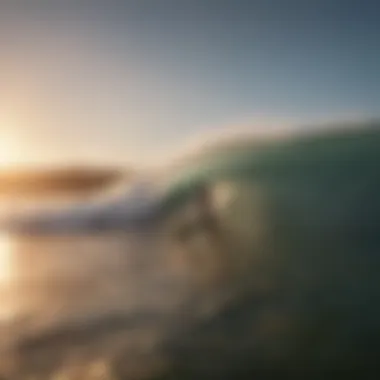
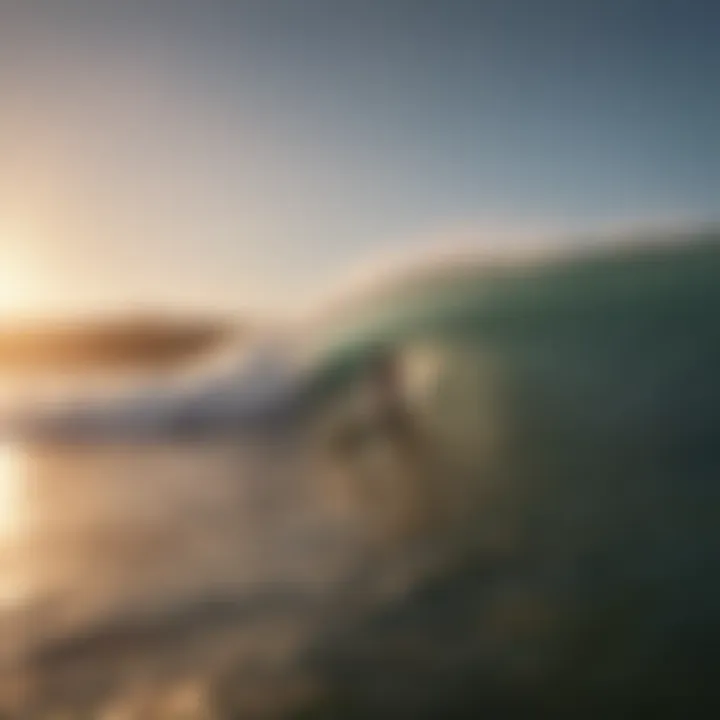
The Caribbean is renowned for its stunning landscapes and some of the best surfing spots in the world. Knowing where to catch the waves is crucial for surfers who seek not only the thrill of the ride but also a deeper connection to the ocean. The prime surfing locations in the Caribbean offer a variety of wave types and conditions, catering to all skill levels, from novices to seasoned pros.
The Bahamas: A Surfing Paradise
With warm waters and sun-kissed beaches, the Bahamas lures surfers looking for ideal conditions. One prime spot is Elbow Cay, where consistent swells year-round create the perfect playground for surfers. Here, rights and lefts roll in, offering options for adaptability.
Some additional notable surf spots include Jaws Beach, known for its powerful waves and scenic beauty, making it not just a surfing spot but an experience. The friendly local surf community ensures that newcomers feel welcomed, fostering a sense of camaraderie. But always beware of the tides, as they can change quickly—"the ocean waits for no one."
Puerto Rico: The Island with Diverse Breaks
Puerto Rico is often called the capital of Caribbean surfing, as it boasts a variety of breaks, each with its unique flavor. Rincón is famous for its sandy beaches and consistent swells that challenge even advanced surfers. While the local surf scene is vibrant and welcoming, respect goes a long way; locals can be as protective of their waves as a lioness is of her cubs.
Middles, another gem on the island, offers thrilling left-handers. Meanwhile, Domes Beach is ideal for beginners, with mellow waves that ease newcomers into the sport without overwhelming them. Whether you are honing your skills or riding the waves, Puerto Rico embraces a culture rich with surf history.
The Surf Scene in Barbados
Barbados stands out not just for its surf but also for its surf culture. Here, you’ll experience everything from world-class competitions to laid-back beach vibes. Soup Bowl in Bathsheba is perhaps the most famous break, known for its powerful barrels that attract competitive surfers throughout the year. The island hosts events that showcase both local talent and international surfers in a colorful tapestry of skill and camaraderie.
Additionally, the Freights break offers a different kind of wave—more suited for those looking to enjoy the ride without the competitive pressure. The strong community spirit here encourages surfers to connect, build networks, and share techniques, ultimately contributing to the rich cultural fabric of Barbadian surfing.
The Hidden Gems of St. Lucia
If you're tired of the busy spots and seek tranquil waves, St. Lucia hides treasures waiting to be discovered. Anse des Sables maintains a serene setting, making it a perfect spot for solitary surf sessions. Though less popular, waves here are inviting and tend to have more consistent conditions during certain seasons.
Another charming location is Pigeon Point, where the sandy bottoms lend themselves to a more forgiving surf—a great pick for learners eager to catch their first wave. Exploring these off-the-beaten-path locations not only reveals pristine surfing options but also showcases St. Lucia's natural beauty, thus enriching the overall surfing experience.
"Finding your wave is as much about the journey as the ride itself."
Overall, prime surfing locations in the Caribbean open doors to a world where wave and culture converge. From bustling breaks in Puerto Rico to hidden gems in St. Lucia, each place offers its own rhythm and unique character. Embracing these locations is essential for anyone wanting to appreciate the full essence of Caribbean surfing.
Surf Conditions: What to Expect
When considering a surfing adventure in the Caribbean, understanding surf conditions is paramount. Each wave not only embodies the spirit of the ocean but also dictates the experiences and challenges surfers encounter. Knowledge of surf conditions allows surfers to make informed decisions, ensuring safety and maximizing enjoyment in the water.
Tides and Their Impact on Surfing
The tidal movements, shrouded in their own mysteries, significantly influence wave conditions. Tides can dramatically affect wave size, strength, and consistency. When high tide rolls in, waves can break differently, with more power. In many spots, this can make the ride smooth sailing.
Conversely, as the tide recedes, waves often get more hollow and fast, demanding precision and skill from surfers. Each surf spot has its preference regarding tides, so it’s essential to know where and when to hit the waves.
- Read local tide tables: Understanding local tide patterns can help delineate optimal surfing times.
- Watch how the tide moves: Observing how waves behave at different tides can give insights for future sessions.
"Waves and tides dance a rhythmic tango, setting the stage for every surf session."
Understanding Wave Heights
Wave heights are gauged by measuring from the trough to the crest. Knowing the unpredictable nature of waves is crucial. For new surfers, heights of 1-3 feet are generally seen as beginner-friendly, providing manageable cascades that build confidence.
As skills improve, tackling 4-6 foot waves offers a greater thrill while still pretty approachable, but anything breaking over 8 feet can be reserved for the seasoned surfers. The dynamic between your skill level and the wave size dictates how enjoyable a session could be.
- Keep an eye on forecasts: Use apps like Surfline to anticipate the wave heights for a given day.
- Observe local conditions: Locals often have the best insights into how waves are acting on any given day.
Local Weather Influences
Local weather conditions, intertwined with the Caribbean climate, play a key role in the overall surfing experience. Wind direction, primarily, can either enhance or detract from wave quality. Onshore winds can cause waves to break messily, reducing surfability, while steady offshore winds help create clean, rideable waves.
Additionally, tropical storms or hurricane seasons bring powerful swells. However, these conditions come with risks, demanding respect and caution.
- Check the wind forecast: Tools like Windy are indispensable for surf conditions.
- Be aware of storm patterns: Knowledge of nearby storm systems can provide insight into upcoming wave opportunities, along with risks.
Understanding the rhythmic interplay of tides, wave heights, and local weather systems equips surfers with the insights they need for a successful surfing experience. This not only enhances enjoyment but also ensures safety in the vibrant yet unpredictable waters of the Caribbean.
The Cultural Significance of Surfing in the Caribbean
Surfing in the Caribbean is more than just a sport; it's woven into the very fabric of island life. This region provides a unique blend of breathtaking scenery and dynamic wave conditions, making it a hotspot not only for thrill-seekers but also for families and communities that thrive on the shared passion of riding the waves. The significance of this activity extends far beyond individual enjoyment, shaping local cultures, economies, and even identities.
Community and Camaraderie Among Surfers
Surfing fosters a strong sense of community among enthusiasts. On many Caribbean shores, surfers often gather, swapping tips, tales of their latest rides, or sizing up the swell on any given day. Whether it’s a laid-back morning at Bathsheba in Barbados or a lively afternoon at Rincon in Puerto Rico, a sense of camaraderie is palpable.
"You don’t just ride the waves; you ride them together. It connects people like a web, no matter where they're from."
Local surf shops often organize meet-ups and group sessions, encouraging newcomers to engage and find their place within the surfer community. This support system is invaluable, especially for those new to the sport or the locale.
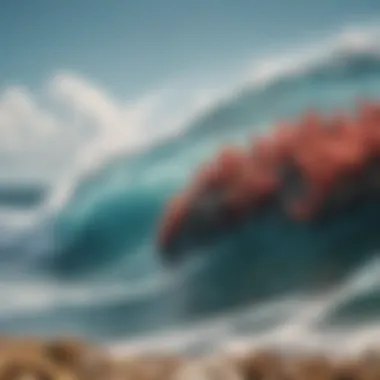
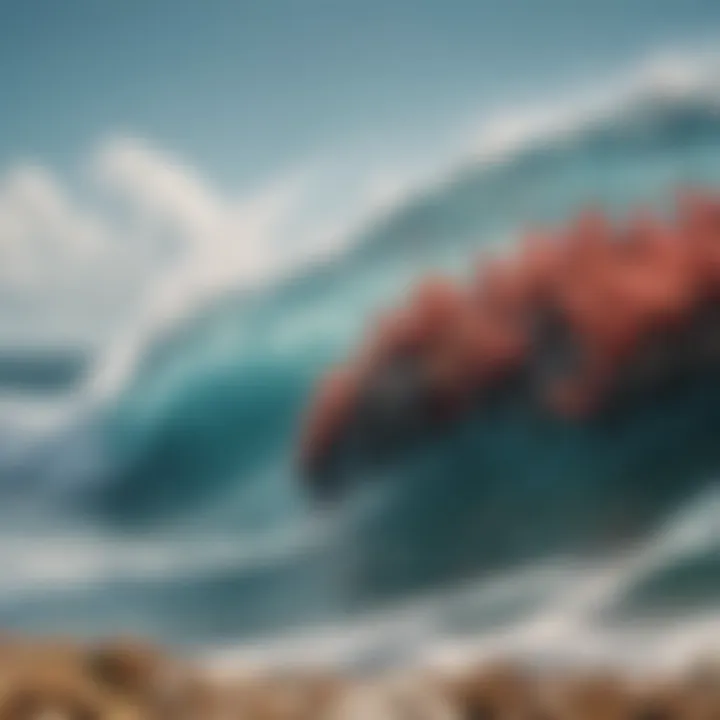
Surf Competitions: Showcasing Talent
Competitions are a vital part of Caribbean surfing culture. Events such as the annual Rincon Surf Fest and the Barbados Surfing Association championships spotlight not only emerging talent but also unite surfers from various backgrounds. These competitions offer a platform for surfers to display their skills while fostering healthy competition.
Every competition tells a story—of dedication, sacrifice, and the sheer joy of surfing. Local participants often inspire the younger generation, showing them that with perseverance, they can achieve their own surfing dream. Spectators, often friends and family, support their favorite surfers, enhancing that tight-knit atmosphere that defines so many Caribbean beaches.
Caribbean Surfing Festivals
Celebrating surfing culture is a vibrant part of life in the Caribbean. Surfing festivals are a grand spectacle, featuring live music, art, and, importantly, local cuisine. These festivals not only promote surfing but also showcase the talent of local musicians and chefs. They become melting pots where different cultures mix and mingle.
In events like the Caribbean Surfing Festival, attendees experience not just surfing but also other activities like yoga sessions, art displays, and even workshops for those eager to learn the craft.
- Essentials of Caribbean Surf Festivals:
- Music and Arts: Engage with local artists, deepening the cultural richness of the experience.
- Food: Tantalize your taste buds with traditional Caribbean dishes.
- Education: Workshops provide invaluable information on surfing techniques and environmental conservation.
Participating in these festivals goes beyond the act of surfing; it becomes about embracing a way of life that values nature, community, and creativity.
Environmental Challenges Facing Caribbean Waves
The Caribbean stands as a beacon of beauty and adventure, attracting surfers and enthusiasts from all corners of the globe. However, its waves face a plethora of environmental challenges. These issues not only pose a threat to local surfing conditions but also to the fragile ecosystems that underpin the Caribbean's charm.
Understanding these challenges is crucial. They shape the surfing experience and influence the very nature of the waves that surfers cherish. Without addressing these environmental concerns, the unique characteristics of Caribbean waves may alter dramatically, rendering once-pristine surf spots less inviting.
Climate Change and Its Effects on Wave Patterns
Climate change is a specter haunting the Caribbean. As the planet heats up, its impact on oceanic conditions cannot be overstated. Rising sea levels, increased water temperatures, and shifting wind patterns all play a role in changing the wave dynamics.
- Rising Sea Levels: Higher sea levels can lead to the inundation of coastal areas, impacting beaches where surfers paddle out. As shorelines erode, break points may disappear or shift, sometimes making formerly reliable surf spots fickle.
- Temperature Changes: Warmer waters can affect the density of ocean layers, leading to unexpected wave behavior.
- Wind Patterns: The direction and intensity of winds are vital for wave formation. Changes in these patterns can create inconsistent surf conditions, frustrating surfers who rely on dependable waves.
"It's essential to consider not only how the waves feel against our boards, but also how climatic changes are reshaping them under our very feet."
Coral Reefs: The Unsung Protectors of Waves
Coral reefs play an unseen yet critical role in the Caribbean's wave landscape. Often considered just breathtaking underwater gardens, these structures are vital in protecting coastlines and maintaining wave integrity.
- Wave Energy Absorption: Reefs act as natural buffers, dissipating wave energy before it reaches the shore. This protective function helps to preserve beach health, preventing erosion and maintaining favorable surfing conditions.
- Biodiversity Support: Healthy reefs foster diverse marine life. This biodiversity contributes to a balanced ecosystem, which in turn can enhance local surfing experiences by ensuring vibrant marine coasts.
Yet, coral reefs face threats from rising ocean temperatures, pollution, and overfishing. Protecting these ecosystems is paramount for the future of Caribbean waves, as their degradation leads to more chaotic wave patterns and increased coastal vulnerability.
Sustainable Surfing Practices
Adopting sustainable surfing practices is imperative for the community around the Caribbean waves. As surfers, they hold the power to protect their playgrounds while enjoying them.
- Leave No Trace: Responsible cleanup after surfing sessions ensures that beaches remain pristine. It avoids littering that can negatively impact marine life and surfing spots.
- Buy Local Gear: Choosing environmentally-friendly surfboards, made from sustainable materials or using recycled components can significantly reduce the ecological footprint of surfing.
- Support Conservation Initiatives: Engaging with local conservation efforts or participating in reef restoration projects is a meaningful way to give back.
In summary, while the Caribbean offers some of the finest waves, its environmental challenges are serious. Understanding and mitigating these through sustainable actions is essential for preserving the beauty and quality of these waves for future generations.
The Equipment: Choosing the Right Gear for Caribbean Surfing
When it comes to surfing in the Caribbean, having the right equipment is like bringing the right tools to a job site—it can often make or break the experience. The waves here can be as dynamic as a samba dancer, and your gear needs to be just as adaptable. Surfboards, wetsuits, and other accessories should be aligned with not only personal preferences but the specific conditions of the Caribbean waters.
Surfboards: Types and Their Suitability
Surfboards come in a variety of shapes, sizes, and materials, each tailored for different surfing styles and wave types. In the Caribbean, knowing which board to ride is key. Here’s a breakdown to guide your choice:
- Shortboards: Best for experienced surfers looking to perform quick maneuvers in powerful, steeper waves. These boards are lightweight and responsive, suitable for spots like Puerto Rico where the surf gets heavy.
- Longboards: Perfect for a laid-back, classic surfing experience. Their stability makes them ideal for both beginners and those enjoying gentler waves, often found on the calm side of islands like St. Lucia.
- Fish Boards: These shorter, wider boards are suited for smaller, mushier waves. They allow for easy turns and are a solid choice for those summer swells when the surf isn’t at its peak.
- Funboards: A blend of shortboards and longboards, these offer a balance that accommodates beginners and intermediate surfers. If you’re unsure about your skill level or conditions, the funboard might be your best bet.
When selecting a surfboard, consider the conditions you’ll mostly be surfing in and your skill set. A board that matches the environment enhances not just performance but also enjoyment.
Wetsuits: A Necessity or An Option?
The Caribbean might be synonymous with warm waters, but depending on the time of year and specific locations, a wetsuit can either be a boon or an unnecessary burden. Here are some factors to consider:
- Water Temperature: While many areas boast comfortably warm water, there are seasonal changes to watch out for. Early mornings or certain depths can get chilly, making a shorty suit a smart investment.
- Sun Protection: The typical Caribbean sun can be fierce. A wetsuit or even a rash guard can offer protection against sunburn while ensuring you're comfortable during longer sessions.
- Flexible Options: Short-sleeve or sleeveless suits give you coverage without too much warmth, allowing for some ventilation. Neoprene thickness also varies, affecting how warm or cool you'll be.
So, while it isn't always necessary to break out the wetsuit in the Caribbean, bringing one along for those cooler moments could save your session from being cut short. It's also about being prepared for what the ocean might throw your way.
"Choosing the right gear can elevate your experience from good to unforgettable. It’s about knowing your environment and adapting to it."
In summary, selecting the appropriate equipment isn't merely about trends but about your comfort, safety, and the enjoyment of the waves. Tailoring your gear to suit the specific charm of the Caribbean coasts allows for a surfing experience that resonates deeply—balanced, vibrant, and exhilarating.
Surfing Etiquette: Navigating the Lineup
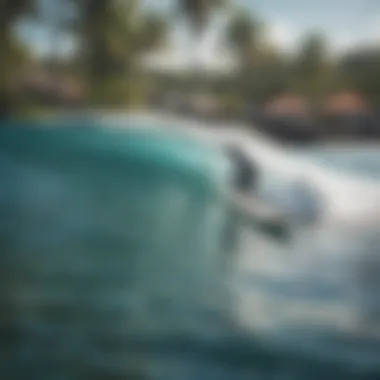
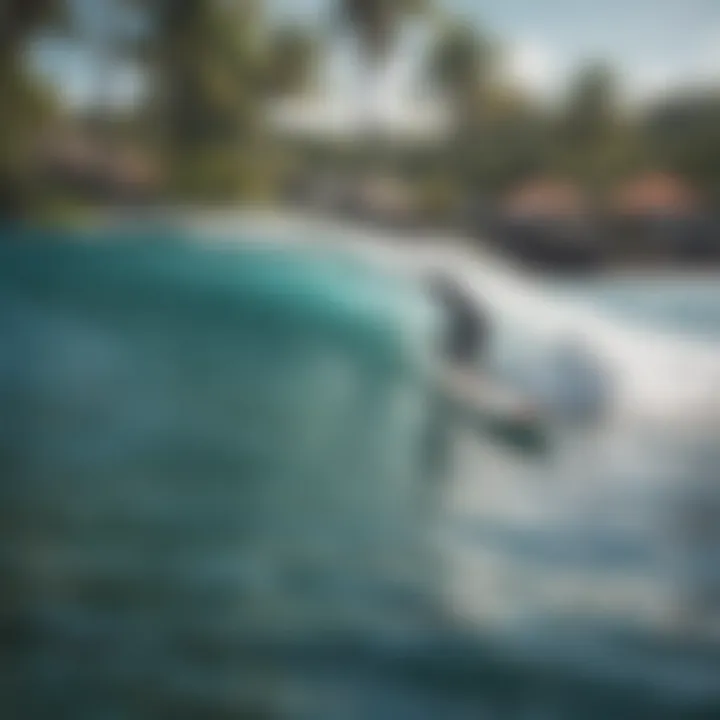
Understanding the unwritten rules of surfing is just as essential as mastering the technical skills. The surf lineup, where surfers wait for the next wave, is not merely a space; it’s a social structure molded by respect, communication, and understanding. Everything here revolves around sharing waves and keeping everyone safe, turning the ocean into a communal experience rather than a battleground.
Understanding Right of Way
The concept of right of way is cardinal when it comes to surfing. Essentially, this principle helps to determine which surfer gets priority when a wave breaks. As a general rule, the surfer closest to the peak of the wave holds the right of way. This rule exists to ensure that waves are ridden smoothly and without interference.
- Respect the Priority: Catching a wave isn't just about skill but also about timing and positioning. If someone is already moving toward the wave, you’d do well to give them that space—and don’t paddle around them.
- Watch and Learn: Before jumping into a crowded lineup, take a moment to observe how locals act. You might learn about specific local traditions that influence who has priority than most common notions.
- Avoid Dropping In: Dropping in, or paddling in front of another surfer already on the wave, can lead to conflicts, and it's generally considered rude. It’s much better to recognize signs of who’s about to catch the wave and settle back if it’s not your turn.
"Surfing is about understanding the balance and flow of the ocean. Respecting right of way is a part of that flow."
Respecting Locals and Their Knowledge
As a newcomer to any surf spot within the Caribbean, respecting the local surfers can make or break your experience. Locals have often honed their skills over years and have an intimate knowledge of their home turf—every nuance of the tides and winds. Here’s why acknowledging them matters:
- Building Relationships: Engaging with local surfers can deepen your understanding of the break. A simple greeting or a compliment can open doors to shared knowledge.
- Learn the Ropes: Locals might share tips about which waves are the best that day or how to handle specific conditions that might not be much of a challenge for them but could be tricky for you.
- Fostering Community: When you show respect, it helps create a friendly atmosphere. No one enjoys confrontation, and forming bonds with locals allows for a more fulfilling surf experience.
In summary, the importance of etiquette in surfing, especially while navigating the lineup, cannot be overstated. It forms the backbone of the surfing community, ensuring that everyone gets their turn while fostering a sense of respect and camaraderie. When in the Caribbean or anywhere for that matter, practicing this etiquette not only enhances your experience but contributes to the rich tapestry of surf culture.
Preparing for a Surf Trip to the Caribbean
Planning a surf trip to the Caribbean isn't just about packing your board and hitting the beach. It requires thoughtful consideration, as the region offers a diverse range of surf conditions, unique cultural experiences, and environmental factors that can significantly impact your trip. Understanding these elements is crucial for maximizing your surfing experience and immersing yourself in the vibrant culture that surrounds it.
Planning Your Itinerary
When crafting your itinerary, it’s wise to consider several key aspects:
- Surf Spot Selection: Identify the specific islands or beachfronts that cater to your skill level. For instance, beginners might seek out the calmer waves in places like The Bahamas, while experienced surfers may prefer Puerto Rico's more challenging breaks.
- Timing Your Visit: Wave conditions can change dramatically with the seasons. Research seasonal swells and weather patterns. Generally, the winter months (around November to April) bring bigger waves, ideal for seasoned surfers, whereas summer might offer gentler surf suitable for novices.
- Local Events: Check the local surfing calendar for competitions or festivals happening during your visit. This adds a layer of excitement and gives you a chance to connect with the surf community. Cultural elements like local food fairs and music can enhance your experience as well.
- Travel Logistics: Consider your arrival and departure times. Car rentals might be essential on certain islands to reach more out-of-the-way breaks, so map out travel routes in advance.
Essential Packing Tips
As you get ready for your Caribbean adventure, packing the right gear is vital. Ensure your luggage includes:
- Surfboard: Choose a board that matches the expected conditions. A shorter board typically handles faster waves better. Take a board bag for protection, especially if you're flying.
- Wetsuit or Rash Guard: Depending on your sensitivity to cooler waters, consider a short wetsuit or heavy-duty rash guard. The Caribbean can have varying water temps, with some regions requiring a bit of thermal protection.
- Sunscreen: Opt for reef-safe sunscreen, as many Caribbean nations are clamping down on harmful chemicals that damage coral reefs. A high SPF lotion will help in protecting your skin from the strong sun.
- First Aid Kit: Basic medical supplies, such as antiseptics, band-aids, and any personal medications, are important. Minor injuries are common in surfing, and being prepared can save a lot of hassle.
- Waterproof Phone Case: To document your surfing adventures without risking damage to your device, invest in a quality waterproof phone case.
Remember, it’s not just about your gear; respecting the local environment is key. Embrace practices that help preserve the beauty of the Caribbean waters and beaches.
Capturing the Experience: Photography and Surfing
In the vibrant dance of waves and sun awaits an impressive canvas for photography. Surfing, more than just gliding through liquid dynamism, presents bountiful opportunities to capture moments that tell stories of adventure and passion. For surfers, the act of shooting those exhilarating rides enhances the overall experience of being on the water. It transcends a mere hobby, becoming a vital part of surf culture, intimately linked to the memory-making process.
Techniques for Capturing Surfing Action
While it might seem simple to snap a surf shot, there’s an art to it. Here are a few techniques that can elevate your photography:
- Know Your Gear: Familiarize yourself with your camera settings. Whether it’s a DSLR or a more compact option, the ability to manipulate settings such as shutter speed can significantly influence the quality of your surf shots.
- Be in Position: Timing is crucial. Get to know the local breaks and anticipate where the action will be. This often means getting there early and settling in for the good shots.
- Keep it Steady: A tripod or a stabilizer can be useful, but sometimes a steady hand is all you need if you're shooting from the shore. Consider the lighting; morning and late afternoon are prime for that golden hour glow.
- Focus on Movement: Using a faster shutter speed is essential to freeze the action, while a slower one can create cool motion blur effects, giving your pictures a more dynamic feel.
- Editing: Post-processing can take your photographs from ordinary to stunning. Practice with software like Adobe Lightroom or Photoshop to adjust aspects like contrast and saturation to make your visuals pop.
"Photography is the story I fail to put into words." — Destin Sparks
These techniques not only help in capturing the action but also the vibrant atmosphere around the waves, showcasing the surf culture.
Sharing Your Surf Stories
Once you've snagged those spectacular shots, telling the stories behind them is where the real magic happens. A captivating photograph without context can feel flat, whereas a narrative enriches the viewing experience. Here’s how you can share your surf stories effectively:
- Socia Media: Platforms like Instagram and Facebook are prime for sharing both images and accompanying tales. Use hashtags like #CaribbeanSurf and #SurfPhotography to reach a like-minded audience.
- Blog Posts: Consider writing longer narratives that dive deeper into your experiences. Share what the wave felt like, how the conditions were, or any unexpected adventures – these details resonate more than the image alone.
- Local Communities: Engage with local surf clubs or online forums on Reddit and similar sites. Share your shots and stories, inviting fellow surfers to comment, learn, or even add their own experiences.
- Exhibitions and Contests: There are opportunities available for showcasing your work. Participate in local or online competitions to get your photography in front of a broader audience.
Telling meaningful stories through visuals and words helps build connections in the surf community and forms a bond that surpasses just catching waves. By highlighting moments together, surfers create a tapestry of experiences that ripple through time.
The Future of Surfing in the Caribbean
The Caribbean's surfing scene, ever-evolving and vibrant, is on the cusp of a new era. Understanding the future of surfing here is crucial not just for enthusiasts but for the region's wider culture and environment. As the tides shift, so do the trends and practices, demanding attention and adaptation. With the influx of technology, environmental awareness, and cultural shifts, surfers must navigate uncharted waters while safeguarding the natural wonders that attract millions.
Emerging Trends in Surf Culture
Caribbean surf culture is a reflection of the broader global phenomena in surfing but has its own distinct twists. New styles and methodologies already appear to reshape the horizon. Some key elements of these emerging trends include:
- Sustainable Practices: More surfers are adopting eco-friendly approaches to ensure that the beaches and reefs remain pristine. From biodegradable wax to conscious travel habits, environmental responsibility is becoming a core value.
- Inclusivity: The Caribbean surf scene welcomes everyone, regardless of age, gender, or skill level. Groups are forming that prioritize inclusion, breaking barriers that previously might have kept some from riding the waves.
- Digital Spaces: Social media platforms and surfing apps are becoming instrumental in building community. Surfers connect, share experiences, and even crowd-source local conditions before hitting the beach. The digital age helps amplify Caribbean surfing, allowing local voices to gain recognition globally.
The adoption of these trends strengthens the connection among surfers and protects the pillars of the Caribbean's surf culture. As the next generation rides the waves, they carry with them an ideology that reflects respect for the waves and the ocean.
Advocacy and Community Action
Caribbean surfing is not merely a sport; it embodies a deep connection to the ocean and the environment. Amid the threats posed by climate change and pollution, local surfers increasingly embrace advocacy roles to sustain their beloved surf spots. Here’s how they’re making ripples:
- Local Conservation Initiatives: Many surfers actively participate in beach clean-ups and ocean protection efforts. They collaborate with environmental organizations to restore coral reefs and educate the public about marine conservation.
- Policy Influence: Surfers are becoming vocal advocates for responsible coastal development and policies that protect marine life. By partnering with organizations focused on sustainable practices, they influence regulations that affect their surfing locales.
- Community Empowerment: Programs that teach surfing to local youth not only promote the sport but also instill a sense of environmental stewardship. Engaging the younger generation fosters a culture of respect and awareness that can lead to long-term positive changes.
By engaging in advocacy and community action, surfers are not just riding the waves – they are shaping the future of their coastline. This proactive approach ensures that the beauty and integrity of the Caribbean surfing experience are preserved for future generations.
"The future is best faced together, with waves of action that flow seamlessly into a tide of change."















